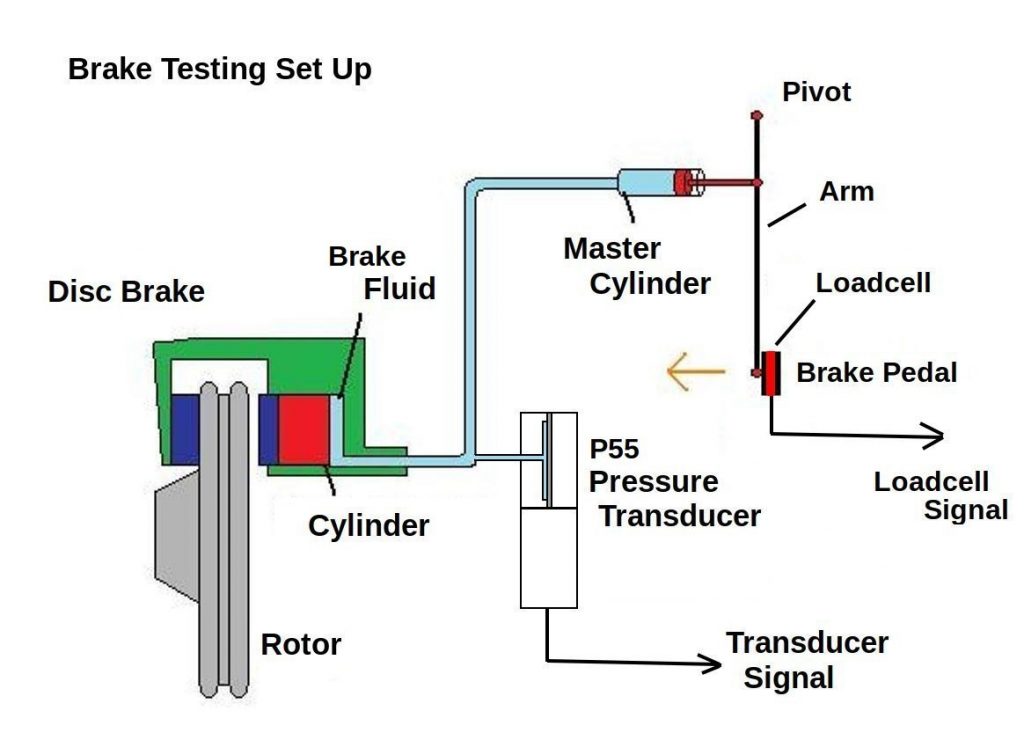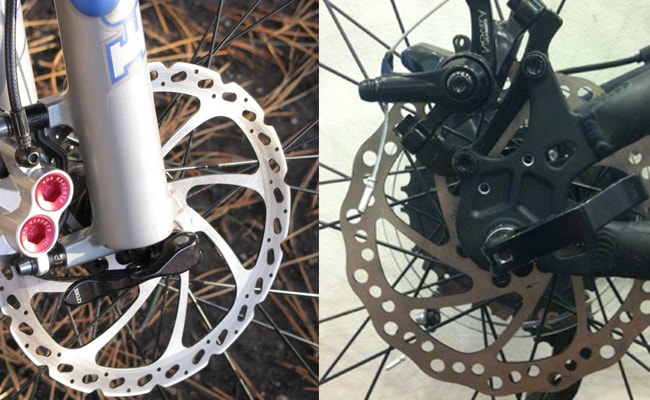Why Upgrade to Hydraulic Brakes for Unparalleled Performance
Mountain biking is a thrilling sport that demands precision, control, and reliability. One of the most critical components of a mountain bike is its braking system, which can make all the difference between a safe ride and a disastrous crash. Traditional mechanical brakes have been the norm for a long time, but they have several limitations. They can be prone to fading, lack precision, and often require frequent adjustments. In contrast, hydraulic brakes for mountain bikes offer unparalleled performance, providing riders with the confidence to tackle even the most challenging terrain. By upgrading to hydraulic brakes, mountain bikers can experience improved stopping power, enhanced control, and a significant reduction in fatigue. With the ability to modulate braking force and maintain consistent performance, hydraulic brakes have become the go-to choice for serious mountain bikers. Whether you’re a seasoned pro or an enthusiastic beginner, understanding the benefits of hydraulic brakes can revolutionize your riding experience.
How to Choose the Right Hydraulic Brake System for Your Mountain Bike
Selecting the ideal hydraulic brake system for mountain biking can be a daunting task, especially with the numerous options available in the market. However, by considering a few key factors, riders can make an informed decision that meets their specific needs and preferences. One of the primary considerations is the type of brake, with disc brakes being the most popular choice for mountain bikes due to their superior stopping power and reliability. Rim brakes, on the other hand, are better suited for lighter, more agile bikes. Caliper design is another crucial aspect, with options ranging from post-mount to flat-mount and direct-mount. Lever ergonomics also play a significant role, as they can greatly impact the overall comfort and control of the bike. Additionally, riders should consider the brake’s compatibility with their bike’s components, such as the wheels and frame. By weighing these factors, mountain bikers can choose a hydraulic brake system that enhances their riding experience and provides unparalleled control on the trails. When it comes to hydraulic brakes for mountain bikes, making the right choice can be a game-changer, offering improved performance, increased confidence, and a more enjoyable ride.
Shimano XT vs. SRAM Guide: A Comparative Review of Top Hydraulic Brake Systems
When it comes to hydraulic brakes for mountain bikes, two names stand out from the rest: Shimano XT and SRAM Guide. Both systems have earned a reputation for delivering exceptional performance, reliability, and control. But which one is right for you? In this comparative review, we’ll delve into the features, performance, and suitability of each system for different riding styles and terrain. The Shimano XT brake system is known for its precision and power, with a focus on modulation and control. Its Ice-Tech brake pads provide excellent heat dissipation, making it an ideal choice for high-speed descents and technical terrain. On the other hand, the SRAM Guide brake system is praised for its simplicity and ease of use, with a focus on intuitive lever design and adjustable reach. Its SwingLink technology provides a smooth, consistent feel, making it well-suited for cross-country and trail riding. When choosing between these two top hydraulic brake systems, riders should consider their specific needs and preferences. For those who prioritize precision and power, the Shimano XT may be the better choice. For those who value simplicity and ease of use, the SRAM Guide may be the way to go. Ultimately, both systems offer exceptional performance and can greatly enhance the mountain biking experience with hydraulic brakes for mountain bikes.
The Science Behind Hydraulic Brakes: Understanding the Technology
Hydraulic brakes for mountain bikes have revolutionized the way riders control their speed and direction. But have you ever wondered how they work? Delving into the technical aspects of hydraulic brakes can help riders appreciate the complexity and sophistication of this technology. At its core, a hydraulic brake system consists of a master cylinder, brake caliper, and brake fluid. When the rider applies the brake lever, the master cylinder compresses the brake fluid, which then transmits the pressure to the brake caliper. The caliper, in turn, applies pressure to the brake pads, causing them to clamp onto the rotor or rim, slowing down the bike. The role of brake fluid is crucial, as it transfers the pressure from the master cylinder to the brake caliper. The fluid’s viscosity and temperature resistance are critical factors in determining the brake’s performance. Pistons and seals also play a vital role, as they ensure a smooth, consistent flow of brake fluid. The science behind hydraulic brakes is fascinating, and understanding how they work can help riders appreciate the benefits they provide. By leveraging the principles of fluid dynamics and materials science, hydraulic brakes for mountain bikes have become an essential component of modern mountain biking, offering unparalleled control and stopping power.
Installation and Maintenance Tips for Hydraulic Brake Systems
Proper installation and maintenance are crucial to ensuring the optimal performance of hydraulic brakes for mountain bikes. A well-installed system can provide reliable stopping power and control, while a poorly maintained system can lead to reduced performance and even safety issues. When installing a hydraulic brake system, it’s essential to follow the manufacturer’s instructions and take necessary precautions to avoid contamination of the brake fluid. Bleeding the system is a critical step, as it removes any air bubbles that may have formed during installation. This process can be done using a variety of techniques, including the traditional manual bleed method or more advanced vacuum bleed systems. Regular maintenance is also vital, including pad replacement and cleaning of the brake caliper and rotor. Additionally, riders should regularly inspect their brake system for signs of wear or damage, such as worn-out brake pads or damaged brake lines. By following these installation and maintenance tips, riders can ensure their hydraulic brakes for mountain bikes are functioning at their best, providing unparalleled control and stopping power on the trails.
Real-World Performance: How Hydraulic Brakes Enhance Mountain Bike Control
Many mountain bikers have made the switch to hydraulic brakes for mountain bikes, and the results are nothing short of impressive. Take, for example, professional mountain biker, Rachel Atherton, who credits her hydraulic brakes for allowing her to tackle even the most treacherous terrain with confidence. “The improved stopping power and control I get from my hydraulic brakes has completely transformed my riding experience,” she says. Similarly, amateur rider, John Smith, noticed a significant improvement in his riding skills after upgrading to hydraulic brakes. “I used to struggle with steep descents, but now I can tackle them with ease, thanks to the increased control and precision of my hydraulic brakes.” These real-life examples demonstrate the tangible benefits of hydraulic brakes for mountain bikes, including improved control, increased confidence, and a more enjoyable riding experience. By providing riders with the ability to slow down and stop quickly, hydraulic brakes enable them to push their limits and tackle challenging terrain with greater ease. Whether you’re a seasoned pro or just starting out, hydraulic brakes for mountain bikes can help take your riding to the next level.
Debunking Common Myths About Hydraulic Brakes for Mountain Bikes
Despite the numerous benefits of hydraulic brakes for mountain bikes, some riders may still be hesitant to make the switch due to common misconceptions about these systems. One of the most prevalent myths is that hydraulic brakes are too heavy, which can negatively impact the overall weight and performance of the bike. However, modern hydraulic brake systems are designed to be lightweight and compact, with many systems weighing in at under 300 grams. Another common concern is that hydraulic brakes are too complex and difficult to maintain. While it’s true that hydraulic brakes require more maintenance than traditional mechanical brakes, the process is relatively straightforward, and many manufacturers provide detailed guides and tutorials to help riders perform routine maintenance tasks. Additionally, some riders may be deterred by the perceived high cost of hydraulic brakes. However, when considering the improved performance, increased safety, and enhanced riding experience provided by hydraulic brakes, the investment is well worth it. In fact, many riders find that the improved control and confidence they gain from hydraulic brakes allows them to ride more efficiently, reducing the need for costly repairs and replacements. By understanding the facts behind these common myths, riders can make an informed decision about whether hydraulic brakes for mountain bikes are right for them.
Future of Mountain Bike Braking: Trends and Innovations in Hydraulic Technology
The world of hydraulic brakes for mountain bikes is constantly evolving, with manufacturers pushing the boundaries of innovation and technology. One of the most significant trends in recent years is the development of more compact and lightweight brake systems, allowing riders to achieve improved performance without sacrificing weight or agility. Another area of focus is the integration of hydraulic brakes with other bike components, such as suspension systems and gear shifters, to create a more seamless and efficient riding experience. Additionally, advancements in materials science have led to the development of more durable and heat-resistant brake pads, reducing the need for frequent replacements and improving overall brake performance. Furthermore, the rise of electronic shifting and braking systems is expected to continue, offering riders even greater precision and control over their brakes. As the technology continues to advance, riders can expect to see even more innovative features and improvements in hydraulic brakes for mountain bikes, such as advanced sensor technology and customizable brake settings. With the constant push for innovation and improvement, the future of mountain bike braking looks brighter than ever, and riders can expect to reap the benefits of these advancements for years to come.








